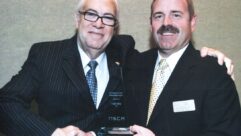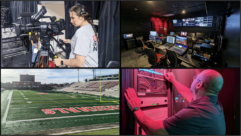
Standardization Advances University of Wisconsin Colleges’ Distance-education Program
Mar 19, 2008 12:00 PM,
By Linda Seid Frembes

Distance education continues to be a popular topic in higher-education institutions. A study by the U.S. Department of Education in 2003 found that more than half of two- and four-year colleges offer distance education programs to their students. At the University of Wisconsin Colleges (UWC), a network of 13 two-year colleges, distance education has been offered in various formats over the last 15 years.
UWC is part of the University of Wisconsin System, one of the largest systems of public higher education in the country. According to the system’s website, the counties and/or cities in which the UW Colleges are located own and maintain the campuses, buildings, and facilities; educational programs, equipment, and services are provided by the UW System.
To keep pace with technology and with growing demand, UWC has committed to a three-year plan to upgrade and standardize its conferencing capabilities at each of its 13 campuses. Initial planning began in 2006, and phase one began in the summer of 2007 with the installation of Biamp Systems Nexia VC and Nexia TC processors in every conferencing room. The Nexia units will facilitate both teleconferencing and videoconferencing activities. In rooms with more than eight microphones, there are two Nexia VC units installed with a single Nexia TC.
“Prior to this upgrade, the audioconferencing equipment was old, and some of it was not functioning correctly,” says Scott Bouffleur, UWC Non-Online Distance Ed (NODE) coordinator, who is responsible for the technology and scheduling for the distance-education program. “And because of the budgets, maintenance of the systems was an issue.”
Each UWC campus hosts multiple distance conferencing classrooms to provide students greater access to instructors with specific skills sets or specialties. The UWC prides itself on offering the essential freshman and sophomore curriculum to prepare their students for transferring to a bachelor’s degree program with a major in almost any field they choose. “There is a network of conferencing facilities on each campus. These facilities are not part of the Online Course Program,” Bouffleur says. “Their uses are mainly to broadcast from campus to campus—for example, broadcasting a French class to a smaller campus that otherwise can’t offer it.”
The Nexia VC processors interface with pre-existing Polycom IP video codecs to aggregate incoming audio and mix and route those signals accordingly. In each room, the instructor has his or her choice of inputs that are accessible from the podium via Crestron touchpanels. Inputs for a laptop, DVD/VHS player, and a CD player, as well as volume control, are at the touch of a button.
“Because of budgets, this two-year upgrade plan had to be executed by in-house staff. If we had hired a contractor, then we would have only enough money for maybe half the campuses,” Bouffleur says. “We liked that both Biamp and Crestron offered training on installation and maintenance of their equipment.” Biamp’s TrueSound AEC algorithm was also a cost-savings. The built-in technology provides high-quality acoustic echo cancellation so that microphones in close proximity to each other and to speakers in the room are not retransmitting incoming audio or clipping other audio signals.
UWC also replaced its older Crestron processors with network-capable components as part of the upgrade plan. This had a direct affect on maintenance, which can now be done remotely. “With these new Biamp and Crestron components we can access all of our system settings via IP and we can upload new configurations quickly and remotely, saving us a lot of time and energy by not having to visit each campus separately,” Bouffleur says.
UWC’s plan did not include any work on the data network. UWC is part of the state’s BadgerNet service provider. “So there no need to upgrade infrastructure,” Bouffleur says. “The data infrastructure was upgraded two years ago to 10Mb connections when we installed the Polycom IP video codecs.”
Currently, Bouffleur has one more year to the two-year rollout plan, with the goal of all campuses enjoying their new technology by the end of summer 2008. In the meantime, he has his eye on high-definition video technology that “would offer a better experience but needs more bandwidth,” he says. “Some programs like nursing and engineering are going to HD, so we are keeping an eye on it.”










